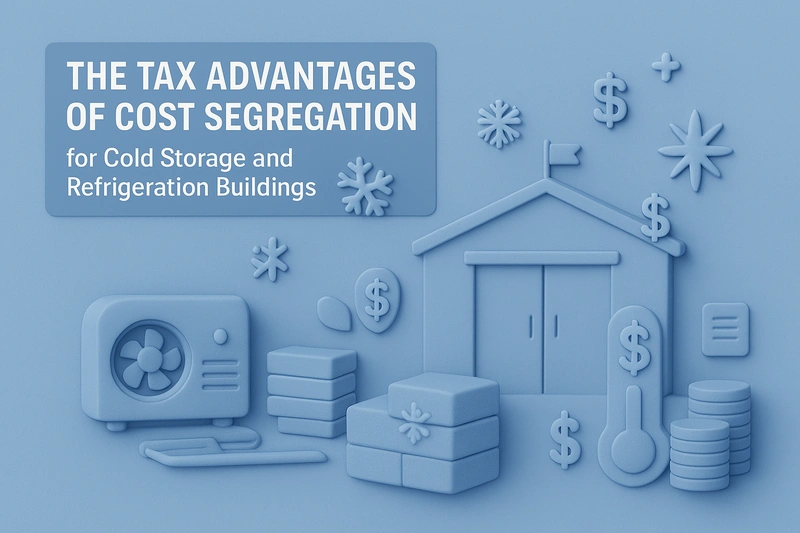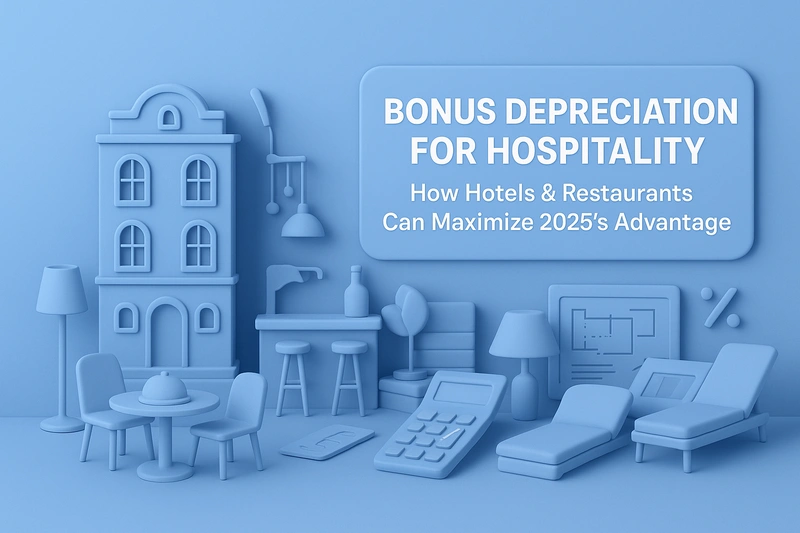I was once brought in to review a newly completed cold storage facility for a regional food distributor. On paper, the project was depreciating straight-line over 39 years. But when I toured the site with the owner, I pointed out elements most accountants overlook: insulated wall panels, freezer doors, the specialized concrete flooring with built-in vapor barriers, and even the high-efficiency lighting designed for low-temperature environments.
Those assets alone represented close to 25% of the project cost, and by reclassifying them into shorter depreciation lives, we were able to accelerate millions in deductions in the very first year. That experience underscored a simple truth: in cost segregation for cold storage and refrigeration buildings, the financial opportunity lies in knowing which components tell a different depreciation story than the building’s shell.
Why Cold Storage Buildings Are Prime Candidates for Cost Segregation
Cold storage and refrigeration buildings differ from standard warehouses in one crucial way: they are engineered environments. Thick insulated wall panels, vapor barriers, rapid-close freezer doors, and industrial-grade refrigeration units transform what would otherwise be a simple shell into a highly specialized facility.
From a tax perspective, this complexity is a strength because many of these systems don’t have to be tied to the 39-year structural life of the building.
For example:
- Insulated panels and vapor barriers: Often treated as part of the building envelope, but in fact, they qualify for 15-year treatment as non-structural components.
- Refrigeration equipment: Evaporator coils, compressors, and condensers can be depreciated over 5 or 7 years, significantly accelerating deductions.
- Specialized flooring: Concrete with integrated heating or vapor control systems is distinct from standard flooring and can be classified outside of 39-year property.
- Lighting and electrical systems: Fixtures rated for low temperatures or designed for high-humidity freezer environments can be reclassified separately.
I’ve seen studies where nearly one-third of a cold storage facility’s total cost could be carved out of the standard building classification. For operators, this means substantial front-loaded deductions at exactly the time when capital is tightest (during expansion, new build, or retrofitting).
How Technical Complexity Translates to Tax Savings
A thorough cost segregation study breaks the building into components like site improvements (15 years), specialized refrigeration equipment (5 or 7 years), and building shell elements (39 years). On one cold storage project, my team singled out freezer doors, insulation, specialized concrete floors with embedded glycol loops, evaporator coils, and even certain lighting systems, all recategorized into shorter recovery periods.
That approach unlocked significant first-year deductions through bonus depreciation, which is especially powerful for assets placed in service after 2022. It’s not theory; it’s real value that flows into operations.
Key Steps for Conducting a High-Value Study
Conducting a study on a cold storage facility requires a methodical approach because refrigeration assets behave differently from standard warehouse components.
- Engage experts early on.
Pulling in cost segregation experts at or before construction lets you tag components as they’re being installed. Retrofitting the study post-build often yields a less precise (and less valuable) asset allocation. - Leverage construction docs and field verification.
Reviewing blueprints, equipment invoices, and contractor schedules helps. I’ve also walked warehouse floors with thermal cameras and equipment lists, validating what stays cold, what moves freight, and what circulates coolant. - Customize the refrigeration system.
Cold storage systems can vary, glycol vs. ammonia, blast freezers vs. cold rooms, dry docks vs. insulated mezzanines. Each setup holds different assets for reclassification. The more familiarity your analyst has with these systems, the smarter the segmentation. - Plan for bonus depreciation expirations.
Thanks to a major legislative update in 2025, 100% bonus depreciation is now permanent for most qualifying property acquired after January 19, 2025. That makes timing still an important factor, both when a property is acquired and when it’s placed in service. Whether you’re evaluating a new deal, planning a retrofit, or scheduling improvements, aligning with the current bonus depreciation rules can significantly amplify your first-year deductions.
How Cold-Chain Operators Often Overlook These Assets
Even seasoned operators miss valuable tax opportunities when refrigeration-related systems are lumped into “building costs” instead of being broken out individually.
- Over-investing in “sameness”: It’s tempting to lump refrigeration elements into “mechanical equipment” without subdividing. A rooftop condensing unit qualifies differently from a full glycol distribution system.
- Ignoring site improvements: Exterior insulated doors, specialized paving, tire-cleaning stations, and service ramps can qualify as 15-year assets, and are often overlooked.
- Not tracking changes in usage: Retrofitting a section (from ambient to freezer) can change depreciation categories. If the user profile shifts, the cost segregation study may need updating.
Compliance, Documentation, and Audit Readiness
With highly specialized assets like freezer panels and ammonia systems, proper documentation is essential to justify classifications and withstand IRS scrutiny.
- Detailed inventory of segregated assets: Capturing serial numbers, function, and depreciation class.
- Strong narrative support: Explaining why each item is reclassified, e.g., “insulated panels separate frozen and ambient areas and incorporate specialized structural elements.”
- Clear linkage to tax law: Internal Revenue Code Section 1245 for personal property recapture and clear timing of bonus depreciation claims.
Maximizing ROI: Strategic Cash Flow Planning
Accelerated depreciation from cost segregation is most powerful when it’s used intentionally. For cold storage operators, that often means reinvesting early tax savings directly into operational capacity. Some of the most impactful uses I’ve seen include:
- Upgrading refrigeration equipment: Replacing older compressors, condensers, and evaporators with high-efficiency models to cut energy costs and extend system life.
- Expanding dock capacity: Adding dock doors or upgrading dock levelers to speed cross-docking and reduce dwell time for refrigerated trucks.
- Building additional cold rooms: Converting underutilized space into freezer or cooler areas to serve new contracts or diversify customer offerings.
- Investing in blast-chill or quick-freeze capabilities: Creating new revenue streams by offering specialized services beyond storage.
- Improving energy efficiency: Installing LED lighting designed for cold environments, variable frequency drives, or upgraded insulation to reduce operating costs.
In one project I advised on, the client redirected year-one tax savings into constructing a blast-chill annex. That addition not only generated new revenue streams from rapid-cooling services but also reduced bottlenecks in the main facility, creating measurable efficiency gains across the operation.
Capitalizing on Cold Storage Depreciation Advantage
You’ve seen how cost segregation for cold storage and refrigeration buildings can convert what’s hidden into real financial agility. To translate that potential into results, working with an expert partner is essential. When you’re ready to put these savings into motion, I encourage you to reach out to us at R.E. Cost Seg. Our meticulous, industry-specific approach aligns perfectly with the strategies outlined here. We’re here to help you unlock and reinvest the true depreciation value inherent in your cold storage assets.






